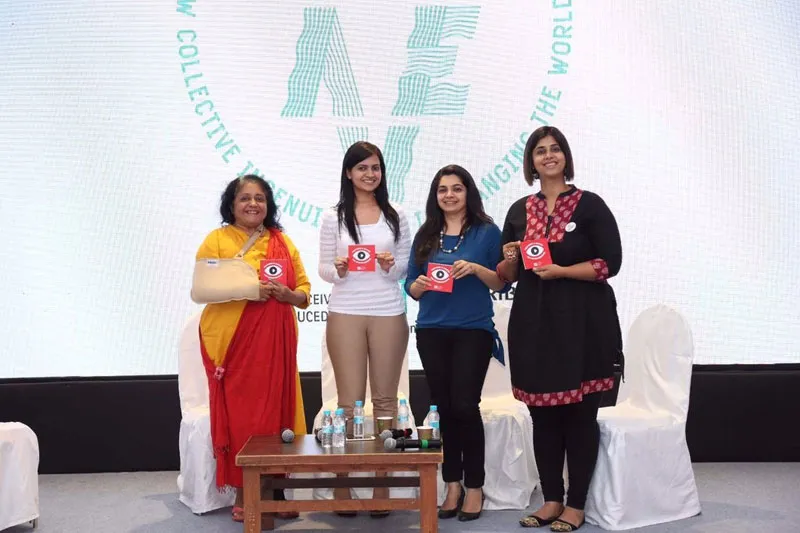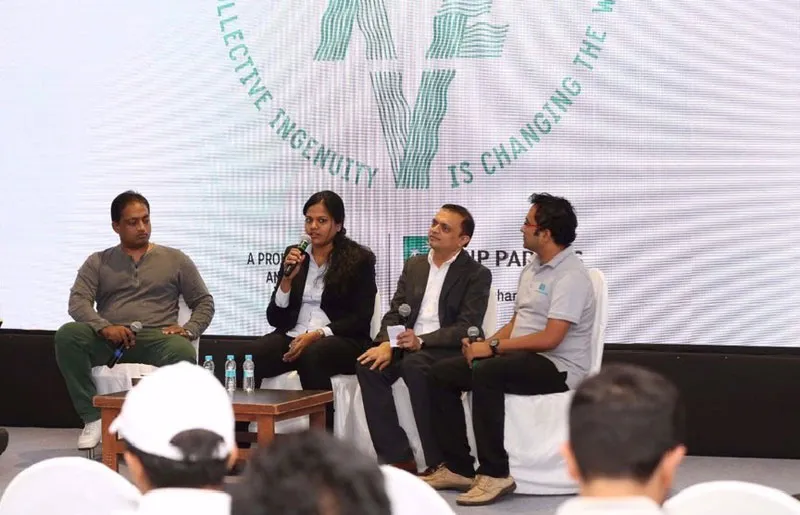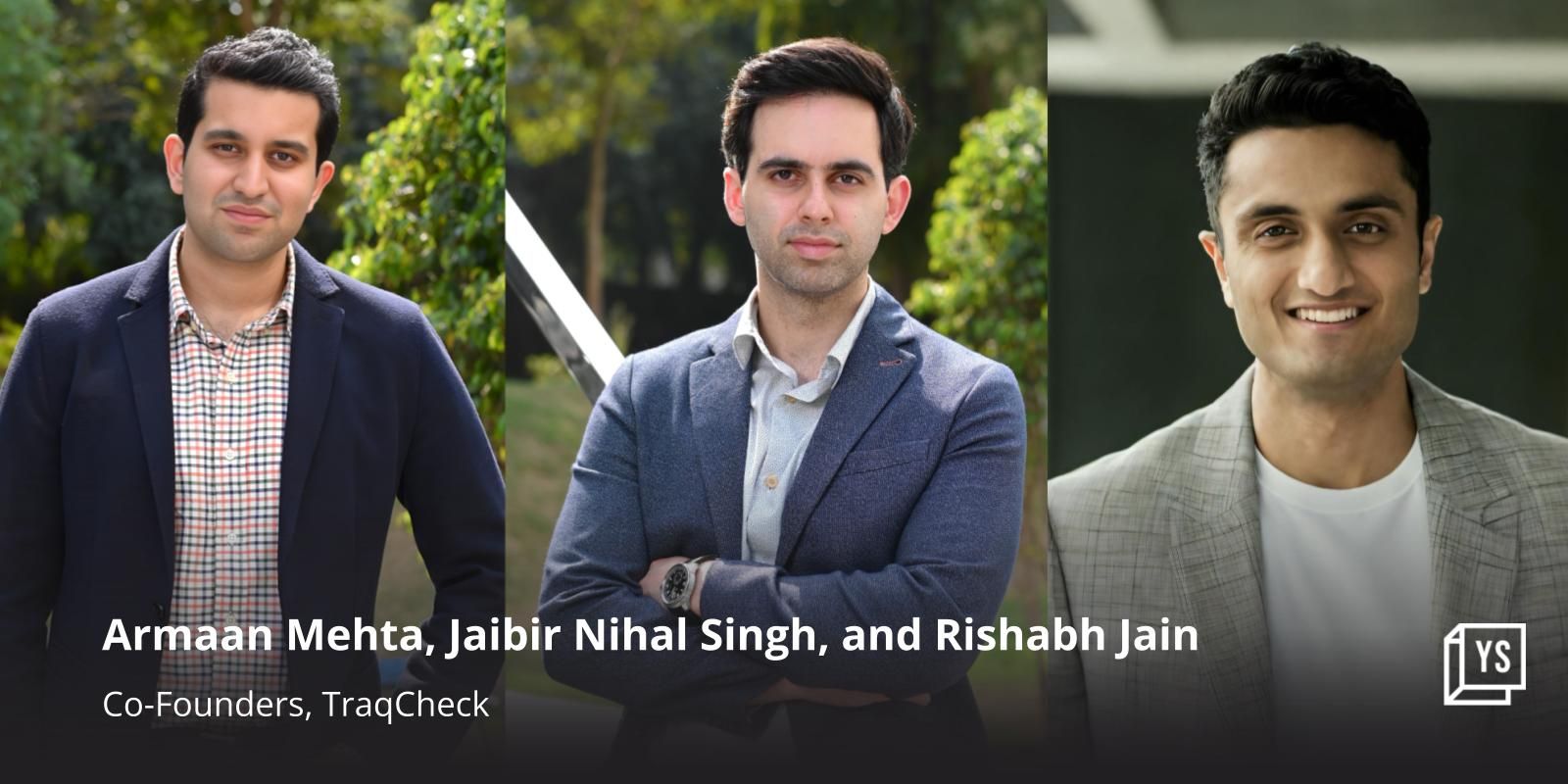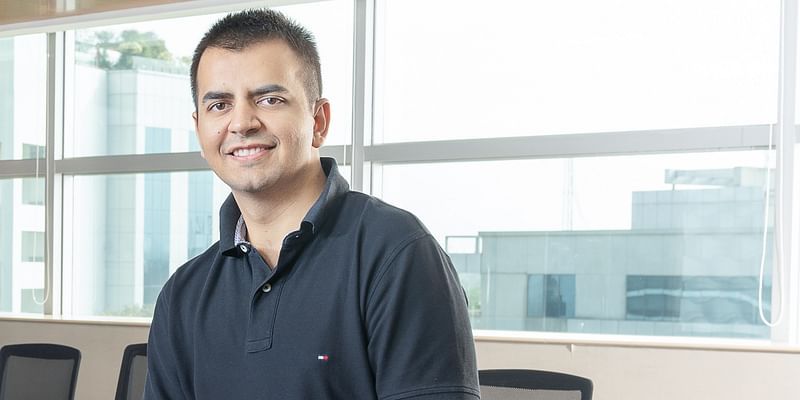The startup mindset – 10 founder insights from Wave Innovation 2016
The Wave Innovation 2016 conference, produced by BNP Paribas and held recently in Paris and Mumbai, featured a range of panels and exhibits on product startups, co-creation, and the sharing economy (see my earlier photo essay: ‘How startups, corporates and maker spaces hold the key to co-creation’).
As programme partner, YourStory organised two panels on ‘Women Entrepreneurs’ and ‘Hardware Innovators’, and moderated a roundtable on ‘The Maker Movement’. Startup speakers included the founders of LogiNext (Manisha Raisinghani), DeBox (Cheelu Chandran), JAMMs (Ritu Gorai), Fitternity (Neha Motwani), Explore Embedded (Sandeep Patil), Implantaire (Yogesh Dubey), and InteractionOne (Krishna Prasad).
Other speakers were drawn from the corporate sector (M. Kavea, BPL), educational institutes (Siddharth Shahani, ISDI), incubators (Anurag Sharma, Mumbai Incubator), medicine (Rohit Modi, eye surgeon), manufacturing centres (Guruprasad Rao, Imaginarium), and maker spaces (Vaibhav Chhabra, Makers Asylum).
Here are 10 insights for startups, drawn from the founder and corporate innovator discussions at Wave Expo 2016 in Mumbai.
- The three E’s: empathy, experiments, and ecosystem
Innovators should develop deep empathy with their customers to get new insights, conduct frequent and rapid experiments to validate these assumptions, and understand the broader ecosystem to identify new enablers and influencers for their customers. These are well captured in innovation frameworks such as design thinking.
In the med-tech sector, for example, it is important for startups to rope in the doctor’s trust to experiment with new products, especially with respect to changing their work behaviour and moving away from existing offerings of large MNCs.
- Tap the innovation megatrends
Five megatrends are transforming societies worldwide: the sharing economy, circular economy, maker movement, co-creation and inclusive business, according to Navi Radjou, co-author of the bestseller ‘Frugal Innovation’ (see my book review).
This spirit of ‘collective ingenuity’ is well reflected in the innovative practices of Los Grobo (an agri-foods producer running only on rented equipment), Bla Bla Car (inter-city cab sharing app), M-Pesa (the mobile money ‘Swiss Army knife’ of Africa), Vauban (alternative energy neighbourhoods in Germany), and Khan Academy Lite (offline e-learning).
Indian innovators riding this wave include Narayana Hrudayalaya (business model tailored to create affordable heart operations), I Paid a Bribe (crowdsourced citizen monitoring of corruption), and Makers Asylum (Mumbai maker space and community). Another big trend of 2015 has been crowdfunding for startups.
- Focus on mobile and IoT
The fact that India has crossed the one billion mobile user mark is good news for all those targeting the domestic market, for B2B and particularly B2C services and products (see also the app developer insights from Mobile India 2016). For example, mobile, personalisation, and big data are trends that provide new insights for fitness platform Fitternity and logistics enabler LogiNext. Digital marketing startup Interaction One is transforming retail commerce with beacons.
The JAMMs networking platform for mothers rides on smartphone networks to connect its members for discussions and events. BPL has come up with a ‘Make in India’ m-health product to tackle chronic disease management. Data entry apps are being used in these scenarios right down to drivers and warehouse worker levels, and analytics is being used by companies to move from reactive to preventive and predictive modes.

- Scale via SMAC
Founders should chart out their growth into phases such as near-term, medium-term, and long-term horizons. These range from workshops (near-term) and a network of cafes (long-term) for empowerment counseling by DeBox. Such phases should also be mapped onto a set of growth hack techniques based on social, mobile, analytics, and cloud (SMAC) tools - see a comprehensive list here.
Connected healthcare is a big trend to watch for companies like BPL. Deploying a SaaS scalability model has helped LogiNext work on more products and clients, and introduce more analytics and insights. Technology has also helped Fitternity develop new business models for its health options and create new behaviours among its members. Startup growth is not ‘1+1’ but ‘1+100’.
- Knowledge management: systematic processes for new ideas
Internal brainstorming along with systematic documentation can build a good pipeline of ideas; insights should be solicited from customers as well. Fitternity gets new ideas via customer surveys; LogiNext gets new ideas via monthly knowledge-sharing sessions with all its employees, as well as business development insights from customers.
BPL has a strong bottom-up component in knowledge sharing and innovation, with insights from doctors and sales teams. DeBox helps professionals explore how ideas can also come from within via spiritual exploration and journeys of the self.
Large companies proactively engage with startups for new ideas and partnerships. Sony and GE engage with Implantaire in this regard. See also my framework of ‘15 innovation tips: how large corporations can successfully engage with startups’.
- Don’t get imprisoned in boxes
There are many myths in Indian society about small town entrepreneurs, rural startups, women founders, and so on – but innovators should think out of these boxes and not allow themselves to be restricted in any way.
Unfortunately, there will always be gender differences and resistance in society, but they will diminish as women take on the male-dominated world and as progressive men also stand up and commit to an equitable society. Women should help other women entrepreneurs, and not call for undue attention and privileges just because of gender, the panelists recommended; women should think of themselves as empowered and enlightened humans and no longer just as victims.

- Be patient – and impatient
Achieving goals can take a long time, so founders should be patient and perseverant. At the same time, they need to be go-getters and work on their vision right now. Founders need to understand what it takes to succeed in different phases of the startup journey: idea, pilot, MVP, product-market fit, finance and growth (well explained in books like ‘Startup Leadership’).
There will always be copycats and me-too imitators ahead, so founders should continually innovate. Emotionally, founders should brace themselves for the perpetual roller coaster ride of entrepreneurship, with its never-ending highs and lows which seem to get even more wild along the journey. They should always question their purpose and align their work with their inner goals (see also my TechSparks overview piece: ‘Purpose, position and partners’).
- Mistakes are learning curves
Failure should be seen as just another opportunity by founders. Mistakes are learning curves, and can happen every day – learn from your mistakes and those of others as well. Founders should fail fast and learn fast along their journey (for more tips and case studies, check out the book 'Fail Fast').
Mistakes can even happen in terms of hiring the wrong people – founders should learn not just how to attract great performers but fire poor performers. It may be a mistake to start the journey without a co-founder – but also a greater mistake to choose the wrong co-founder. Other pitfalls can arise in choosing the wrong kinds of funders and mentors.
- Design and UX
Founders need to overcome India’s talent crunch in design and UX (see my coverage of UX India 2015 and Design Summit 2015). At the same time, lack of experience should not come in the way of a good team – passionate committed people will learn on their own. The ‘Make In India’ initiative must also go along with ‘Design In India’.
Startups should have a hacker mindset, and build a great product and team with broad-based design inputs. Many big companies also turn to startups for insights into effective app development; startups are much more nimble and responsive to user trends in this regard. An interesting trend to watch is the convergence between the physical prototyping space and virtual/augmented reality (‘the physical-virtual jugalbandi’, according to Siddharth Shahani of ISDI).

- Reach out to maker communities
A great space and community for getting insights into product design and creative development is the maker movement. Ideas are a good start, but they need support to be externalised and to solve real problems via maker spaces. Maker spaces nurture the contagious spirit of creation, along with respect for peer learning.
The maker movement helps build individual confidence to move from creativity and empowerment to team formation and entrepreneurship. A range of maker meetups are happening in cities across India, for example, Maker’s Asylum in Mumbai and the Mini Maker Faire in Bengaluru.
As the panels and discussion wrapped up, it was commonly agreed that the government’s Startup India initiative is a necessity for a country like India with so many challenges and opportunities. Startups need to engage with government more closely to iron out the provisions on tax regimes, listing requirements, importing of hardware components, and so on. There have been too many slips between the cup and the slip by successive Indian governments, and the time has come now to deliver and not just discuss!
We look forward to the Wave 2017 conference and exhibition already, and to a new wave of insights on innovation, entrepreneurship, and co-creation.











![[Jobs Roundup] These openings may help you land a role at hyperlocal ecommerce startup LoveLocal](https://images.yourstory.com/cs/2/a182c7e0140711e987e2f7248b252f46/Image268x-1629816896673.jpg)